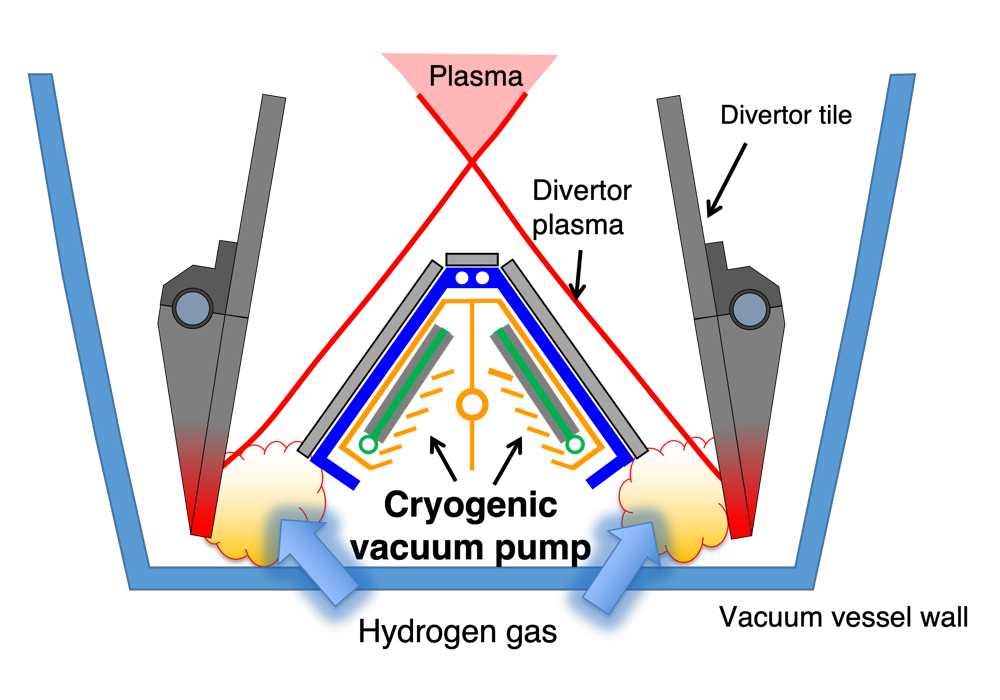Control of plasma particles by powerful vacuum pumping
In plasma experiments in the Large Helical Device (LHD), we discovered that the controllability of plasma particles can be improved by compressing fuel particles in a region called the divertor and by pumping them out strongly with a cryogenic vacuum pump. This achievement is expected to greatly advance research on particle control in fusion power generation.

Fusion power generation is achieved by injecting hydrogen fuel into a high-temperature plasma of over 100 million degrees Celsius, where the injected hydrogen becomes high-temperature ions and undergoes a nuclear fusion reaction. The ionized hydrogen (fuel particles) is ejected out of the plasma, some bouncing off the plasma facing walls and back into the plasma, and some being ejected out of the vessel by a vacuum pump. The research team has experimented with the use of powerful cryogenic vacuum pumps in a system called a divertor to reduce the amount of hydrogen returning to the plasma in plasma experiments in the Large Helical Device (LHD).
In the divertor system, hydrogen fuel is drawn in to compress the hydrogen fuel. The experiment team systematically investigated the relationship between the cage of magnetic field lines that confine the plasma (magnetic field configuration) and the compression of neutral particles in the divertor. As a result, they found that the hydrogen fuel can be highly compressed in the divertor, if the position of the center of the plasma (magnetic axis) is inward-shifted.
Next, plasma discharges were performed using a cryogenic vacuum pump inside the divertor in the magnetic configuration with the magnetic axis that is inward-shifted. As a result, the density of the plasma was increasing without the cryogenic vacuum pump in the divertor, and eventually plasma was collapsed due to uncontrollable plasma density. On the other hand, the plasma density can be maintained at a constant level with the cryogenic vacuum pump in the divertor, and the plasma density is successfully controlled. In addition, plasma heat transport analysis (another major achievement of this research was the creation of a heat transport analysis program) showed that energy confinement was better at the plasma core region when a cryogenic vacuum pump in the divertor was used. This established an easy and stable method for controlling hydrogen fuel. We expect that further progress will be made in our research toward maintaining steady-state fusion plasmas.
This research was conducted by Gen Motojima and his research group at the National Institute for Fusion Science.
The results of this research were published in Physica Scripta, an international journal on physics and physical sciences, on February 21, 2022.
